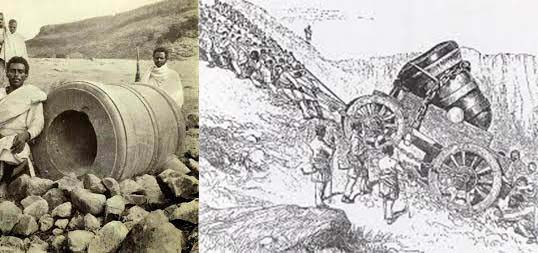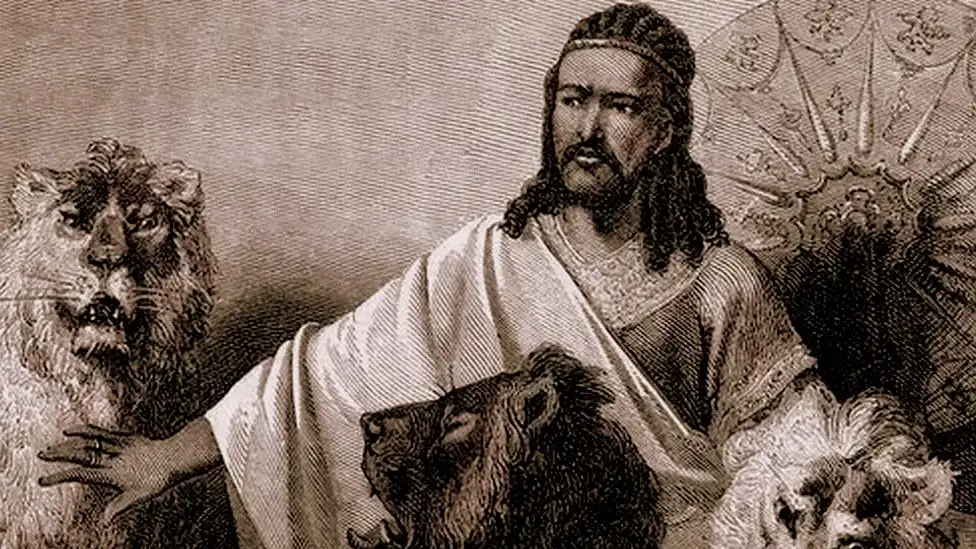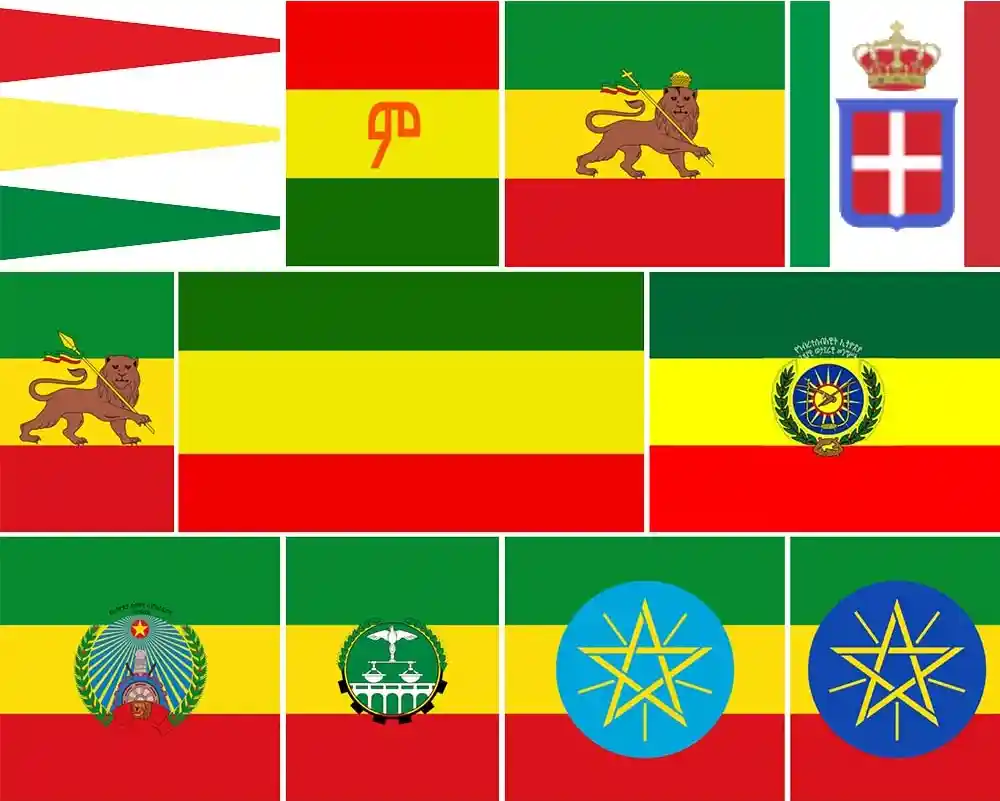The Battle of Magdala (1868): Emperor Tewodros II’s Last Stand
In 1868, the rugged cliffs of Magdala, a fortress in Ethiopia’s Amhara Region, witnessed a dramatic clash that shaped the nation’s history: the Battle of Magdala. Emperor Tewodros II, a visionary leader determined to modernize Ethiopia, faced off against a British expedition in a standoff that would become his final act of defiance.

This pivotal event not only marked the end of Tewodros’s reign but also left a lasting legacy, from looted treasures to Ethiopia’s enduring spirit of resistance.
Today, Magdala’s ruins attract travelers seeking to explore Ethiopia’s rich history. Why did a British army march 400 miles into Ethiopia’s heartland, and what treasures were lost? Dive into the story of the Battle of Magdala and test your knowledge with our interactive quiz at the end!
Historical Context: Tewodros II and His Vision
Born Kassa Hailu around 1818, Tewodros II rose from humble beginnings to become one of Ethiopia’s most transformative emperors (r. 1855–1868). Crowned during the fractured Zemene Mesafint—the “Era of the Princes”—he envisioned a unified Ethiopia under a strong central authority. His reign was marked by sweeping reforms: he curbed the power of regional warlords, modernized the military, and sought to forge a cohesive national identity.
Tewodros’s efforts to modernize were symbolized by Sebastopol, a massive cannon constructed at his order. Forged at his fortress in Debre Tabor with the help of European artisans and Ethiopian labor, Sebastopol stood as a testament to his determination to build a self-reliant and militarily powerful state.

Though difficult to transport and ultimately of limited battlefield use, the cannon embodied Tewodros’s vision of Ethiopian strength through modernization.
But Tewodros’s vision extended beyond internal reform. Determined to modernize Ethiopia and secure its sovereignty in the face of rising European imperialism, he looked outward—particularly to Britain—for support. He hoped that aligning with a major power could bring not only military aid and modern weaponry, but also recognition and respect.

In this spirit, he sent a letter to Queen Victoria in 1862, proposing friendship and requesting technical and logistical assistance.
When months passed without a reply, Tewodros felt deeply insulted. In his eyes, the silence was not just a diplomatic slight—it was a betrayal. He began to suspect that European powers were conspiring with his enemies, and his frustration turned to action.
In 1863, in a dramatic attempt to force Britain’s hand, Tewodros detained British consul Charles Duncan Cameron, along with other European civilians and missionaries, at his mountain fortress in Magdala. This bold move was not merely an act of defiance—it was a calculated strategy.

He believed that holding foreign nationals would compel Britain to respond to his earlier requests and open meaningful negotiations on his terms.
However, his gamble backfired. Diplomatic efforts to resolve the crisis only inflamed tensions. When British negotiators sent to discuss the hostages’ release were themselves imprisoned, the British government saw no alternative but to resort to force.
This act of defiance, meant to assert Ethiopia’s sovereignty, provoked outrage in Britain. The stage was set for a confrontation that would test Tewodros’s resolve and leave a mark on Ethiopian history.
The Battle of Magdala: A Clash in Ethiopian Highlands

In 1867, Britain launched an unprecedented expedition to free the hostages and assert its imperial might. Led by Sir Robert Napier, a force of 13,000 troops, including Indian soldiers and local allies, embarked on a grueling 400-mile march from the Red Sea coast to Magdala. The journey through Ethiopia’s rugged terrain, with elephants carrying artillery, was a logistical feat. Tewodros, entrenched in his mountaintop fortress, prepared to defend his vision with a much smaller army of about 4,000 men.
The Battle of Magdala unfolded from April 9 to 13, 1868. On April 10, Tewodros’s forces launched a desperate attack at Aroge, below Magdala’s cliffs, but were repelled by British firepower, including rockets and rifles. Over the next days, British artillery bombarded the fortress, shattering its defenses.
Facing defeat, Tewodros released the hostages but refused to surrender. On April 13, as British troops stormed Magdala, he took his own life with a pistol, choosing death over capture. The battle ended in a British victory, but Tewodros’s defiance cemented his legacy as a national hero.

The clash, though a loss, showcased Ethiopia’s resilience against colonial powers, a theme echoed later in the Battle of Adwa. Magdala’s cliffs, still standing today, echo with the courage of a leader who dared to challenge an empire.
The Aftermath: Looted Treasures and Repatriation Debates
The British victory came at a heavy cultural cost. After storming Magdala, Napier’s forces looted priceless Ethiopian treasures: sacred manuscripts, royal crowns, gold crosses, and even parts of the Kebra Nagast, Ethiopia’s epic chronicle.

These artifacts, many now housed in UK institutions like the British Museum, were taken as war trophies, sparking a centuries-long debate over cultural heritage. The looting devastated Ethiopia’s historical legacy, stripping Magdala of its sacred relics.

In recent years, the repatriation movement has gained momentum. Ethiopia has demanded the return of Maqdala’s treasures, with successes like the 2021 return of a looted crown by a private collector. These efforts resonate deeply with the Ethiopian diaspora, who see the artifacts as symbols of national identity. The debate raises questions: Should looted treasures be returned to Ethiopia, and how can their cultural significance be preserved?
Visiting Magdala Today: A Historical Journey
Magdala, now known as Amba Mariam, remains a powerful destination for history enthusiasts and tourists. Located in the Amhara Region, about 30 miles from Gondar, the fortress ruins offer a glimpse into Tewodros II’s final stand. Visitors can explore remnants of the stronghold, including cannons and stone walls, set against stunning highland views. The site is accessible via guided tours from Gondar or Bahir Dar, with the dry season (October–March) being the best time to visit for clear trails and mild weather.
To plan your trip, hire a local guide for historical insights and combine your visit with nearby attractions like Lake Tana’s monasteries or Gondar’s Fasil Ghebbi. Respect local customs by dressing modestly and supporting community vendors. Magdala is more than a ruin—it’s a testament to Ethiopia’s enduring spirit, perfect for diaspora travelers reconnecting with their heritage or adventurers seeking untold stories.
The Battle of Magdala (1868) remains a defining moment in Ethiopian history, showcasing Emperor Tewodros II’s courage and the nation’s resilience against colonial powers. From his visionary reforms to the looted treasures still sparking repatriation debates, Tewodros’s legacy endures.
Today, Magdala’s ruins invite travelers to explore Ethiopia’s past, while the story of 1868 inspires pride among the diaspora and beyond.
Are you an Ethiopian History enthusiast? Why not participate in our fun and interactive quiz game challenge solely focussed on Ethiopia?













